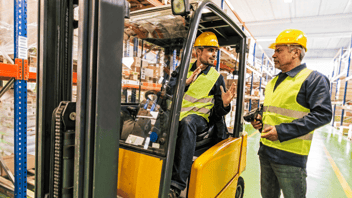According to the World Health Organization (WHO), about 20-50% of employees are prone to workplace hazards globally. It is also estimated that about 2.3 million people die from work-related injuries and diseases per year.
The potential risk of injury or death aside, there are financial and legal implications that are associated with workplace safety negligence such as damage of property, compliance problems, and unwanted lawsuits. These facts underline the need to maintain workplace safety be it in a traditional office building, home office, loading dock, or factory. To help you with workplace safety, here are 7 important workplace safety factors that you need to maintain in any workstation:
1. Manage Work-Related Stress
About 60-80% of accidents in the workplace are associated with stress. Stress manifests itself in the form of fatigue, muscle tension, dizziness, and headache, among other symptoms. These symptoms make it difficult for workers to focus, which can be dangerous especially for people who handle heavy machinery.
Sources of stress in the workplace are diverse- they can stem from personal issues to work stressors. To minimize them, employers need to:
-
Encourage employees to maintain a healthy work-life balance. A life coach can help them with that.
-
Train employees on personal and workplace safety, and be sponsoring them for annual safety refresher courses.
-
Invest in your workers’ career development and personal growth so that they feel valued. Employees who feel valued are very unlikely to harm themselves or their colleagues at work.
2. Mitigate Potential Risk Sources
Potential risks vary from workplace to workplace, as well as from one workstation to another, depending on the line of work and equipment used. It is paramount that you invest in regular professional inspections and repairs for all machinery and electronics used in your workplace. In case a machine gets faulty between inspections, get it fixed ASAP. Get rid of machines that are either damaged beyond repair or not worth repairing. Faulty and poorly maintained HVAC systems can also be dangerous. They can, for example, cause electrocution or expose workers to poisonous gases. You should instantly get a professional to repair faulty systems with quality HVAC parts from trusted dealers.
Other common accidents in the workplace can be from wires on the floor causing trips and falls, poor lighting, crashes, and falling objects. Identify all these potential hazards and mitigate them beforehand.
3. Use Mechanical Aids Where Necessary
Invest in the right tools for the right job. Workers don’t have to break their backs lifting heavy cargo, for example. Equip them with mechanical aids such as cranes, conveyors, forklifts, or the good old wheelbarrow to move objects around.
4. Wear Personal Protective Equipment (PPE)
Personal protective equipment guards workers against chemical, physical, radiological, mechanical, and biological hazards. Most of them are designed to protect the head, feet, legs, ears, torso, arms, hands, face, and eyes. They include protective goggles, safety helmets, gloves, respiratory protective equipment (RPEs), safety footwear, high-visibility clothing, and safety harnesses, among others. It is up to you to know which of these PPEs your line of work demands.
5. Encourage Regular Breaks
Burnout drains people mentally and physically, making them susceptible to costly human errors. Common indicators of burnout include fatigue, blurred vision, a sense of detachment, anxiety, reduced performance, and low mood. As a worker, take note of these indicators and stop working immediately when you notice any of them. Take a short break, probably enjoy a non-alcoholic beverage and, if necessary, grab a bite before resuming work. As an employer or line manager, encourage employees to take regular breaks by adding an office kitchen and/or a break room.
6. Follow Safety Rules
Some of the basic safety rules call for you to:
-
Stay alert at all times just in case you need to run for your life or to help a colleague out of an impending hazard.
-
Wear appropriate clothes at work, especially the PPEs provided. Doesn’t matter if it is a 2-minute or a day-long task: Always be dressed appropriately.
-
Bring unsafe conditions or defective equipment to your bosses’ attention. If they fail to act, don’t shy away from reporting them to the relevant authorities.
-
Get first aid on the spot when you are injured.
-
Don’t leave loose and/or hanging wires and cords along high-traffic pathways.
-
If you spill water or anything that makes floors slippery, clean it up ASAP!
7. Promote Ergonomics At Work
Ergonomic conditions account for more than 50% of work-associated illness among employees. Therefore, developing a strong ergonomic culture will make it easier for workers to work efficiently and safely. Start by acquiring basic ergonomic work gear such as desks, chairs, and computer holders.
Conclusion
Save your organization the reputation assassination and unwanted lawsuits that could come with workplace injuries. And what’s more, the benefits of work safety are numerous, some of them being enhanced employee productivity, engagement, and talent retention. Put these tips to work!



-3.png?width=352&name=Untitled%20design%20(2)-3.png)


Leave a Comment